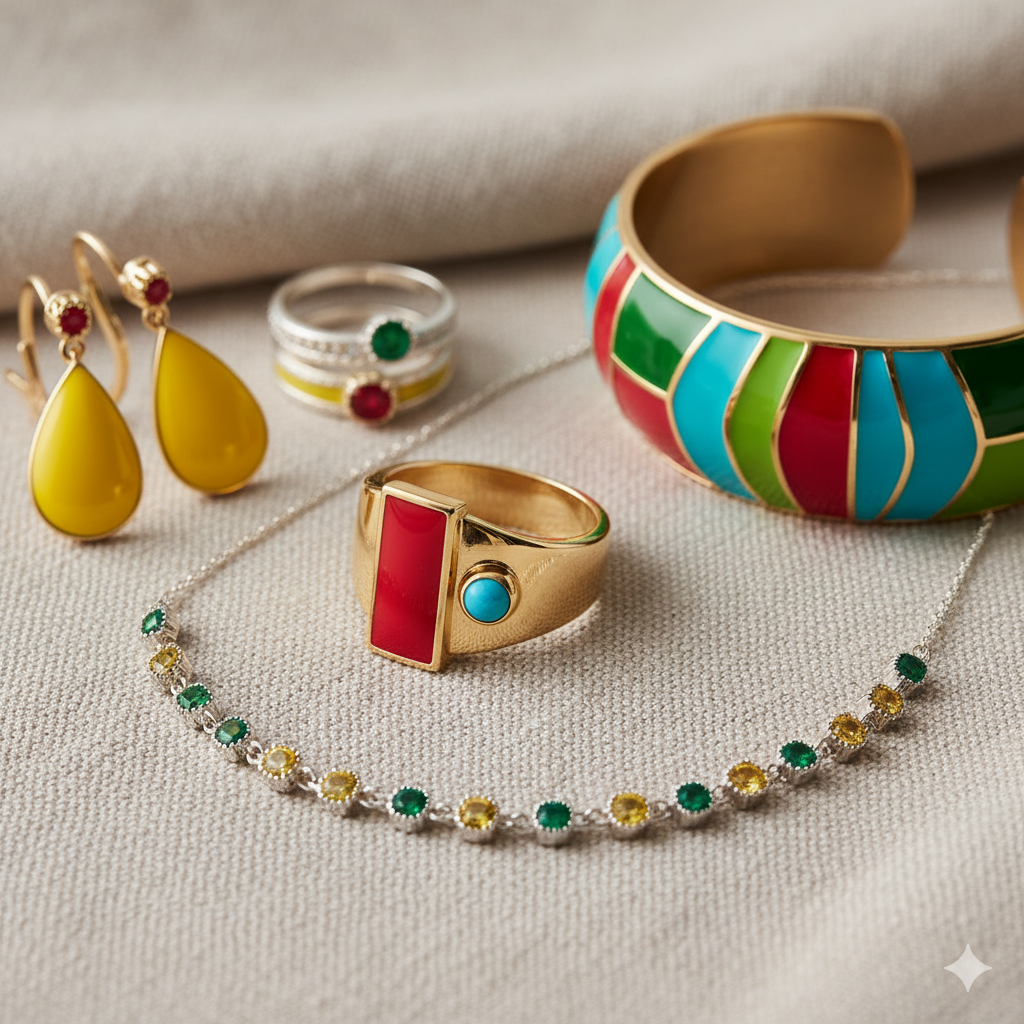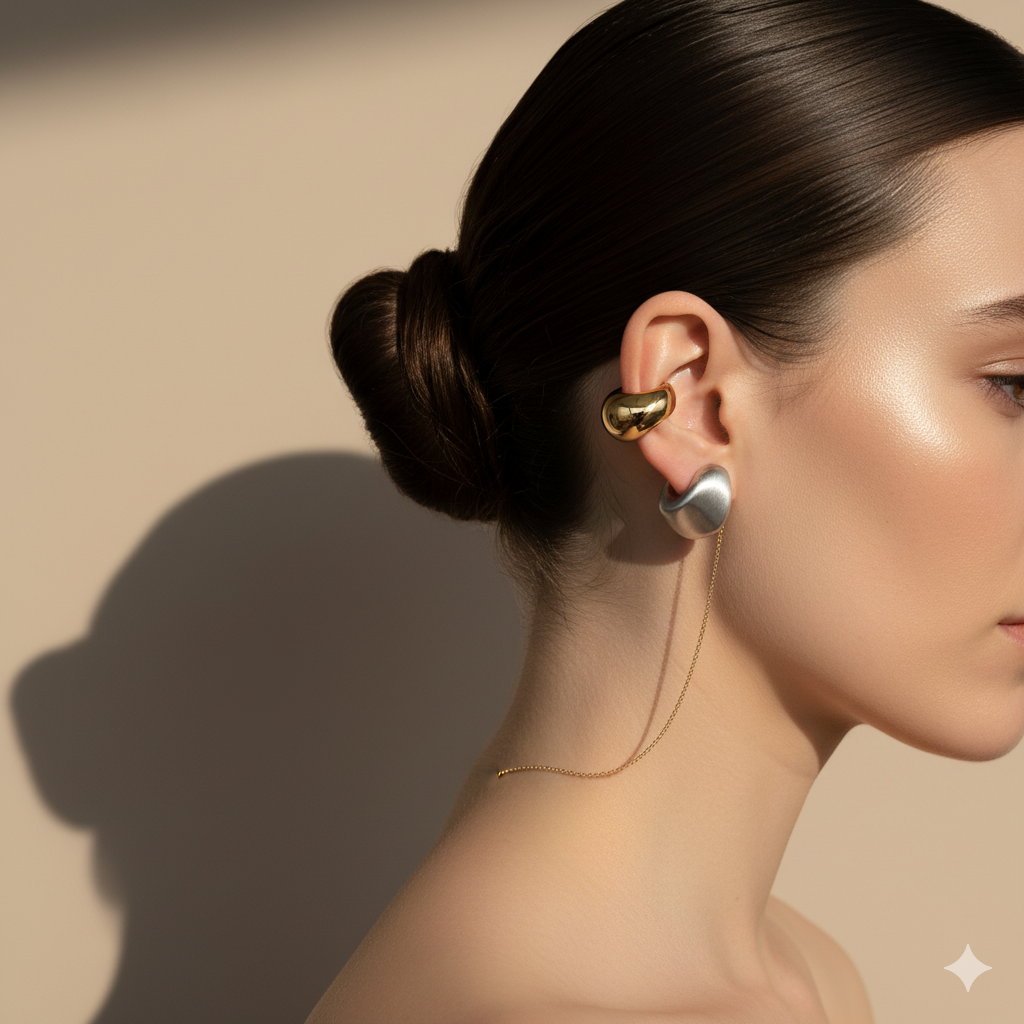DIY & Upcycled Jewelry Trends: Personal Creation & Reuse
The jewelry world in 2025 is shifting from mass-produced sparkle to mindful, personal creativity. DIY and upcycled jewelry are more than just crafting hobbies — they represent individuality, sustainability, and emotional storytelling. Consumers today want to wear meaning, not just materials. They’re turning to repurposing, redesigning, and reimagining old treasures into new statements.
This surge of creative craftsmanship has been amplified by eco-conscious movements and digital tools that make jewelry-making more accessible than ever. Whether it’s converting vintage charms into layered necklaces or melting broken pieces into new forms, DIY jewelry embodies self-expression in its purest form.
The Rise of DIY Jewelry in Modern Fashion
The “Do It Yourself” jewelry trend isn’t new, but its cultural weight in 2025 is. A new generation of creators and micro-artisans is redefining what it means to own jewelry. Platforms like Instagram, TikTok, and Etsy showcase thousands of creators experimenting with beads, chains, and recycled alloys.
Why It’s Trending Now
-
Personalization: People want jewelry that reflects their story — initials, found materials, heirloom pieces — all crafted by their own hands.
-
Sustainability: As the fashion industry faces scrutiny for waste, repurposing old jewelry supports a circular economy.
-
Accessibility: 3D printing, AI design tools, and open-source CAD files make it easier than ever for individuals to craft professional-quality pieces from home.
-
Emotional Connection: DIY jewelry often holds sentimental value — reusing pieces from family or travel memories makes every creation unique.
Upcycled Jewelry: Turning Old Into New
Upcycled jewelry focuses on breathing new life into existing materials — be it broken gold chains, discarded beads, or old gemstone settings.
Common Upcycling Methods
-
Melting & Reforming Metals: Old gold or silver jewelry can be melted and recast into minimalist rings or pendants.
-
Stone Reuse: Vintage gems, even chipped ones, can be repolished or embedded in resin to create artistic designs.
-
Mixing Old & New: Designers now pair recycled metal bases with modern enamel or bio-resin overlays.
-
Hybrid Crafting: Combining reclaimed materials with 3D-printed components — bridging traditional and digital craftsmanship.
As discussed in our post on Sustainable Jewelry Spotlight: Recycled Metals & Fair-Trade Sourcing, this trend aligns with global efforts toward ethical and environmentally responsible production.
Sustainability & Circular Fashion in Jewelry
Jewelry upcycling is part of the broader slow fashion movement. It combats waste by transforming forgotten items into timeless pieces. With a growing awareness of ethical sourcing, consumers are choosing jewelry that reduces their carbon footprint without compromising beauty.
Key Sustainable Practices in Jewelry Reuse:
-
Using recycled gold or silver instead of mining new metals.
-
Incorporating lab-grown gemstones for ethical alternatives.
-
Utilizing local artisans or workshops for low-impact production.
-
Packaging jewelry in compostable or reusable materials.
According to the World Gold Council, recycled gold accounts for nearly 30% of global gold supply — a figure expected to rise as sustainability drives design choices.
Creative Tools Powering DIY Jewelry Design
Technology has democratized jewelry creation. From CAD software to AR-based design simulations, anyone can conceptualize professional jewelry from home.
Modern Tools for Jewelry Creators
-
3D Design Platforms: Tools like RhinoGold or MatrixGold help DIY designers experiment with digital prototypes.
-
AI-Powered Assistants: Inspired by trends like those in our Digital Fashion Futures: AI-Driven Jewelry Recommendations & Trend Matching, creators can now generate design suggestions based on personal style.
-
At-Home Casting Kits: Affordable metal-melting and resin-casting tools make professional results possible for beginners.
-
Laser Engraving Devices: Personalize initials, patterns, or dates onto jewelry surfaces with precision.
The blend of technology and artistry empowers hobbyists to operate at the level of small jewelry brands — a defining feature of 2025’s handmade revolution.
From Hobby to Small Business: Monetizing DIY Jewelry
Many creators are transforming their personal crafts into thriving online businesses. Social media’s visual nature makes it the perfect launchpad for jewelry makers to sell their creations and build communities around sustainable art.
Tips for Aspiring Jewelry Entrepreneurs:
-
Use Video Content: Show behind-the-scenes processes on platforms like TikTok or YouTube Shorts.
-
Leverage Marketplaces: Etsy, Shopify, and Depop offer accessible e-commerce options.
-
Sustainability Messaging: Emphasize eco-friendly production and repurposing ethics in your branding.
-
Collaborate with Artists: Cross-promote with other creators for shared visibility.
This trend mirrors the cultural shift toward authenticity — where imperfection and handmade textures are celebrated, not hidden.
Aesthetic Movements within DIY Jewelry
Different aesthetics have emerged within the DIY jewelry scene, reflecting a wide range of influences:
-
Boho Revival: Natural materials like shells, wooden beads, and woven cords.
-
Minimal Modern: Thin recycled gold chains, geometric pendants, and delicate layering.
-
Avant-Garde Upcycling: Incorporating nontraditional materials like glass, bottle caps, and hardware pieces.
-
Retro Craft: Beaded Y2K necklaces and nostalgic charms, tying into trends covered in Beaded Necklaces & Colorful Bead Bag Charms: How ’90s-Inspired Jewelry Is Back with a Twist.
Each movement blends personal creativity with a conscious commitment to sustainability — a hallmark of the new jewelry ethos.
The Emotional Resonance of Personal Creations
DIY jewelry represents identity, connection, and intention. A handmade ring from recycled gold or a bracelet crafted from family heirloom beads carries emotional value beyond aesthetics.
This sense of ownership — from concept to creation — makes upcycled jewelry not only sustainable but profoundly personal.
The Future of DIY & Upcycled Jewelry
Looking ahead, the convergence of sustainability, personalization, and digital design will continue reshaping the jewelry landscape. We can expect to see:
-
AI-assisted design platforms guiding material reuse.
-
Subscription-based craft boxes promoting sustainable DIY creation.
-
Increased use of blockchain for tracking recycled materials.
-
Growth in artisan marketplaces emphasizing traceability and reuse.
In 2025, jewelry isn’t just worn — it’s crafted, reused, and reimagined. The creative empowerment behind DIY and upcycled jewelry reflects a cultural transformation: one that values skill, story, and sustainability as the new markers of luxury.






Leave a comment
This site is protected by hCaptcha and the hCaptcha Privacy Policy and Terms of Service apply.